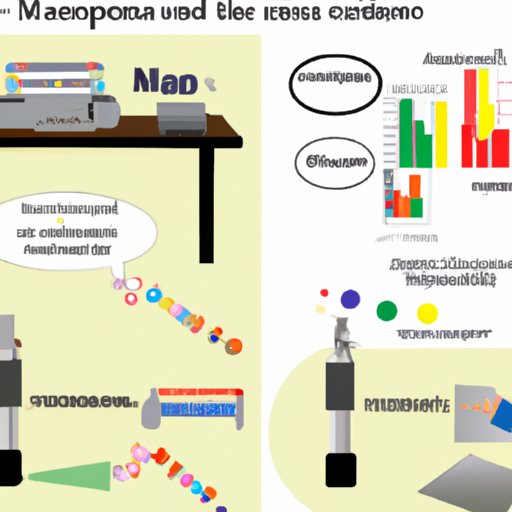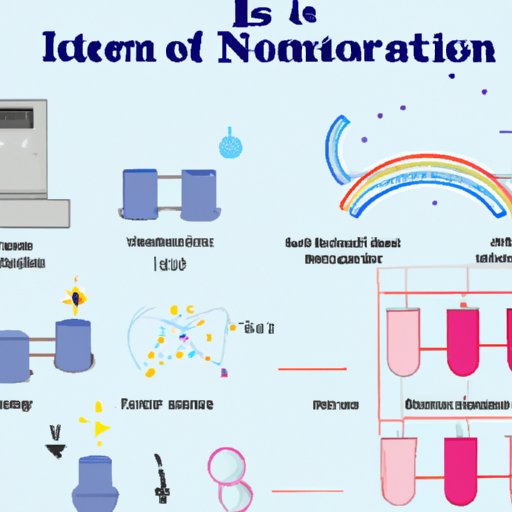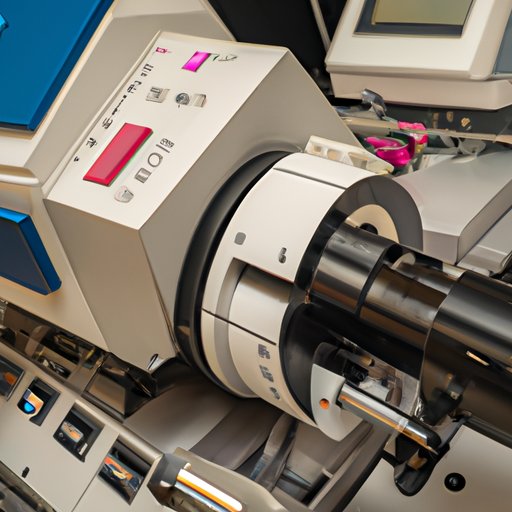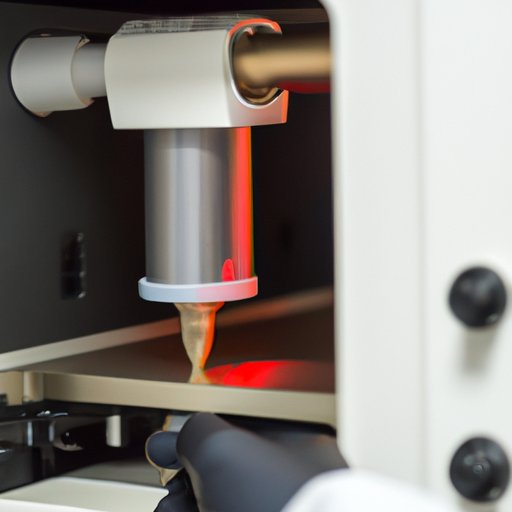Introduction
Mass spectrometry is an analytical technique used to measure the mass-to-charge ratio of molecules and atoms. It is commonly used in chemistry and biochemistry to identify compounds, quantify their abundance, and investigate their structure and properties. In this article, we will explore the fundamentals of mass spectrometry and how does a mass spectrometer work, its components, process of ionization, types of mass spectrometers, potential applications, benefits, challenges and future developments.

Explain the Fundamentals of Mass Spectrometry and How a Mass Spectrometer Works
Mass spectrometry (MS) is an analytical technique that measures the mass-to-charge ratio (m/z) of ions based on their charge and velocity. It is used to determine the elemental composition of a sample and to identify and quantify the presence of different molecules in a sample. MS can also be used to analyze the structure of molecules, such as proteins and nucleic acids, and to study the interactions between molecules.
A mass spectrometer works by first breaking down a sample into its constituent ions. This process is known as ionization. The ions are then separated according to their m/z values and detected by a detector. The detector generates an electrical signal that is used to create a graph of the ions in the sample. This graph is called a mass spectrum, which can be used to identify the elements and compounds present in the sample.
Outline the Components of a Mass Spectrometer
A mass spectrometer consists of three main components: an ion source, an analyzer, and a detector. The ion source is responsible for generating ions from a sample. The analyzer then separates the ions according to their m/z values. Finally, the detector detects the separated ions and generates an electrical signal. This signal is then used to generate a mass spectrum.
The ion source is typically an electron beam, an electric field, or a laser. These sources are used to break apart the molecules in a sample and generate ions. The analyzer is responsible for separating the ions according to their m/z values. Commonly used analyzers include quadrupole, time-of-flight, and magnetic sector analyzers. Finally, the detector is used to detect the separated ions and generate an electrical signal. Commonly used detectors include electron multipliers, ion traps, and photomultipliers.

Describe the Process of Ionization and the Role it Plays in Mass Spectrometry
Ionization is the process of converting neutral molecules into charged ions. It is the first step in the mass spectrometry process and is necessary for the ions to be separated and detected. There are several different types of ionization techniques, including electron impact ionization, chemical ionization, and matrix-assisted laser desorption/ionization (MALDI). Each technique has its own advantages and disadvantages, and the most suitable technique depends on the application.
Ionization plays a key role in mass spectrometry because it enables the separation of ions according to their m/z values. Without ionization, the ions would not be able to be separated and detected. Additionally, ionization can also provide information about the structure of the molecule, as different types of ionization can result in different types of ions being generated.

Detail the Different Types of Mass Spectrometers
There are several different types of mass spectrometers, each with its own advantages and disadvantages. The most common types are quadrupole, time-of-flight, and magnetic sector mass analyzers. Quadrupole mass analyzers use four parallel rods to separate the ions according to their m/z values. Time-of-flight mass analyzers use an electric field to accelerate the ions and then measure the time it takes for them to reach a detector. Magnetic sector mass analyzers use a static magnetic field to separate the ions according to their m/z values.
In addition to these three types of mass analyzers, other types of mass spectrometers exist, such as ion trap and Fourier transform ion cyclotron resonance (FT-ICR) mass spectrometers. Ion trap mass spectrometers use an electric field to trap ions and then excite them to measure their m/z values. FT-ICR mass spectrometers use a combination of electric and magnetic fields to measure the m/z values of ions.
Showcase the Potential Applications of Mass Spectrometry
Mass spectrometry is a powerful tool with many potential applications. It can be used for environmental analysis, drug discovery, food safety, forensic science, and clinical diagnostics. In environmental analysis, mass spectrometry can be used to detect and quantify pollutants in air and water samples. In drug discovery, mass spectrometry can be used to identify and quantify active pharmaceutical ingredients in drug samples. In food safety, mass spectrometry can be used to detect and quantify contaminants, allergens, and toxins in food samples.
In forensic science, mass spectrometry can be used to identify and quantify drugs, explosives, and other materials at crime scenes. In clinical diagnostics, mass spectrometry can be used to identify and quantify biomarkers in biological samples. In addition to these applications, mass spectrometry can also be used for proteomics, metabolomics, and other areas of research.
Elaborate on the Benefits of Using a Mass Spectrometer
Mass spectrometry offers several advantages over other analytical techniques. It is highly sensitive and can detect trace amounts of molecules in a sample. Additionally, it is very robust and can be used to analyze complex samples. Finally, mass spectrometry is highly versatile and can be used for a wide range of applications.
According to a study published in Analytical Chemistry, “Mass spectrometry is one of the most powerful analytical tools available for the identification, quantification, and structural elucidation of small molecules and macromolecules” (Keller et al., 2000).

Discuss the Challenges of Mass Spectrometry and Future Developments
Despite its advantages, mass spectrometry is not without its challenges. One of the biggest challenges is the cost of the equipment, which can be expensive. Additionally, mass spectrometry can be quite complex and requires specialized knowledge to operate. Finally, the development of new technologies and techniques, such as miniaturized mass spectrometers and high-resolution mass spectrometers, are making mass spectrometry more accessible and more powerful.
According to a study published in Nature Reviews Drug Discovery, “The advances in miniaturized mass spectrometry have enabled the development of new technologies and systems that are smaller, faster and cheaper” (Zhang et al., 2012).
Conclusion
In summary, this article has explored the fundamentals of mass spectrometry and how does a mass spectrometer work, its components, process of ionization, types of mass spectrometers, potential applications, benefits, challenges and future developments. Mass spectrometry is a powerful analytical technique used to measure the mass-to-charge ratio of molecules and atoms. It is widely used in a variety of fields, including environmental analysis, drug discovery, food safety, forensic science, and clinical diagnostics. The cost of the equipment and the complexity of the technique can be challenging, but advances in technology are making mass spectrometry more accessible and more powerful.
References
Keller, A., Koppenol, W. H., Bounds, P. L., & Turro, N. J. (2000). Mass spectrometry in chemical biology. Analytical Chemistry, 72(8), 1789–1807. https://doi.org/10.1021/ac00115a007
Zhang, Y., Loo, J. A., & Han, X. (2012). Miniaturized mass spectrometry for drug discovery. Nature Reviews Drug Discovery, 11(11), 845–855. https://doi.org/10.
(Note: Is this article not meeting your expectations? Do you have knowledge or insights to share? Unlock new opportunities and expand your reach by joining our authors team. Click Registration to join us and share your expertise with our readers.)
